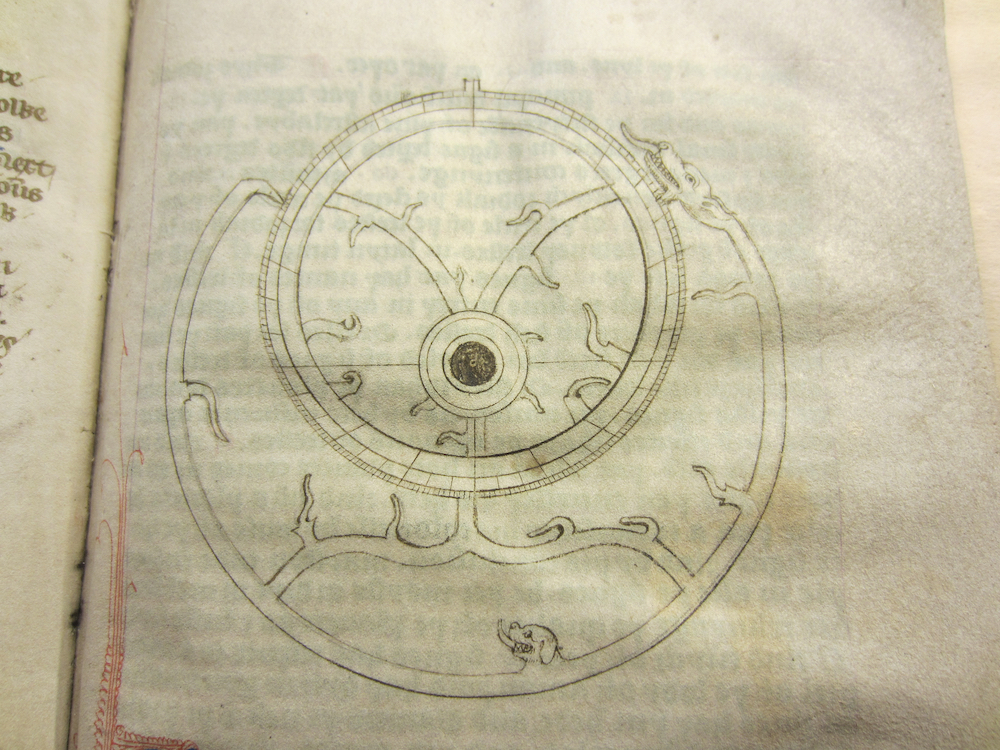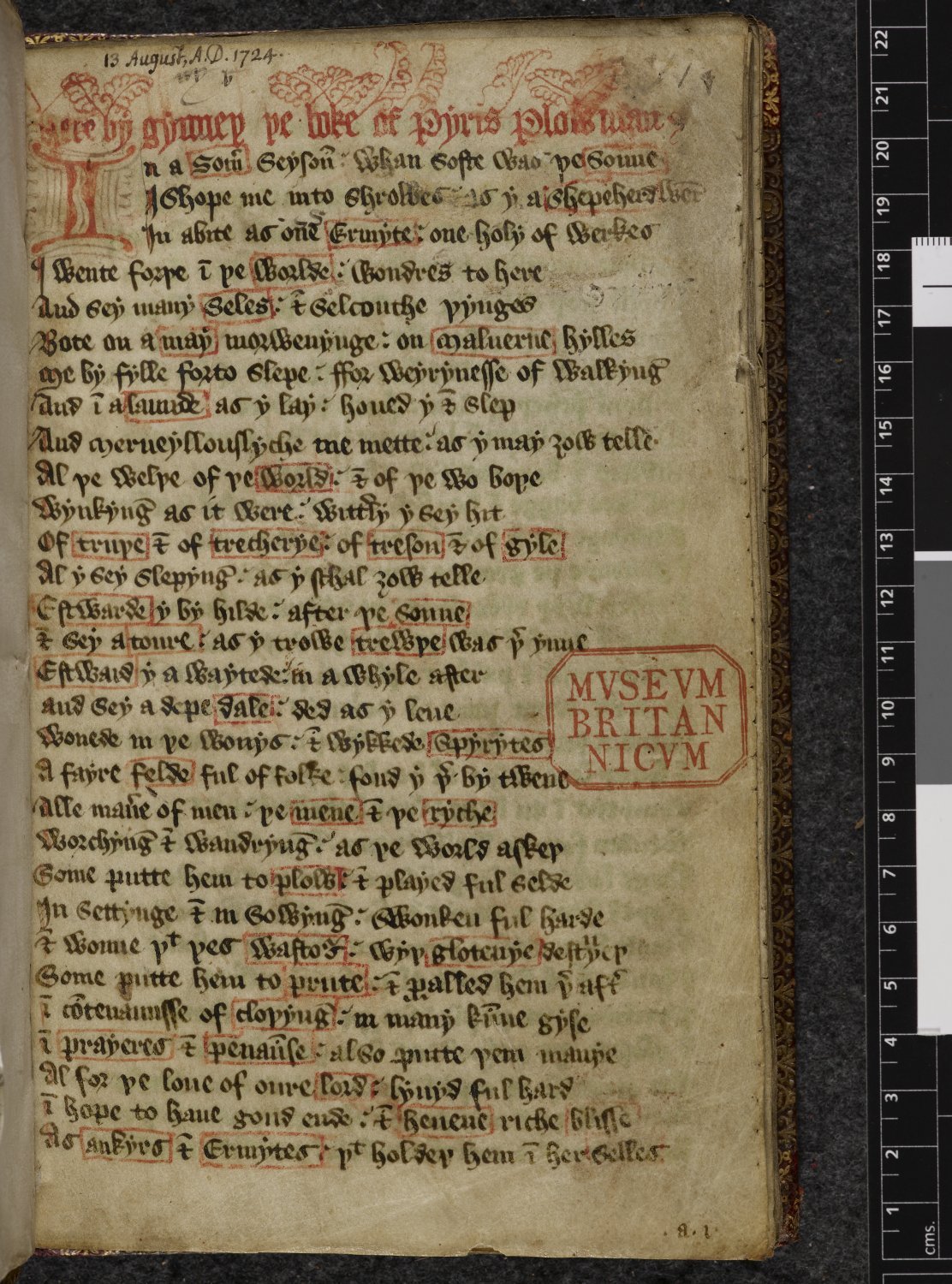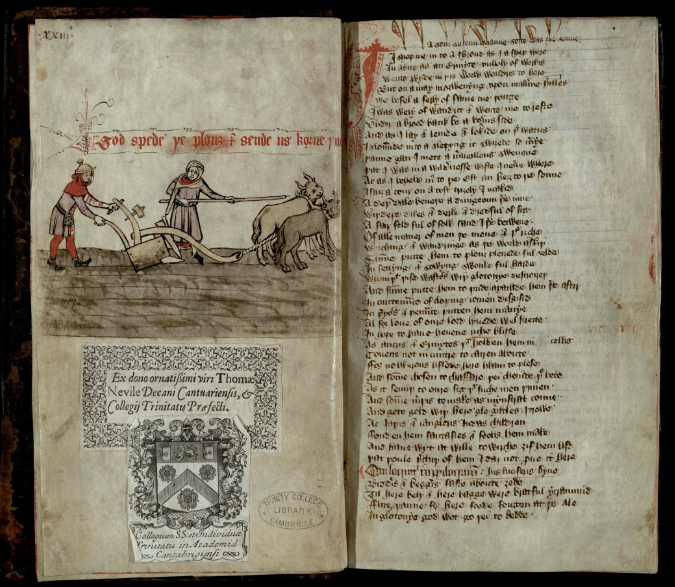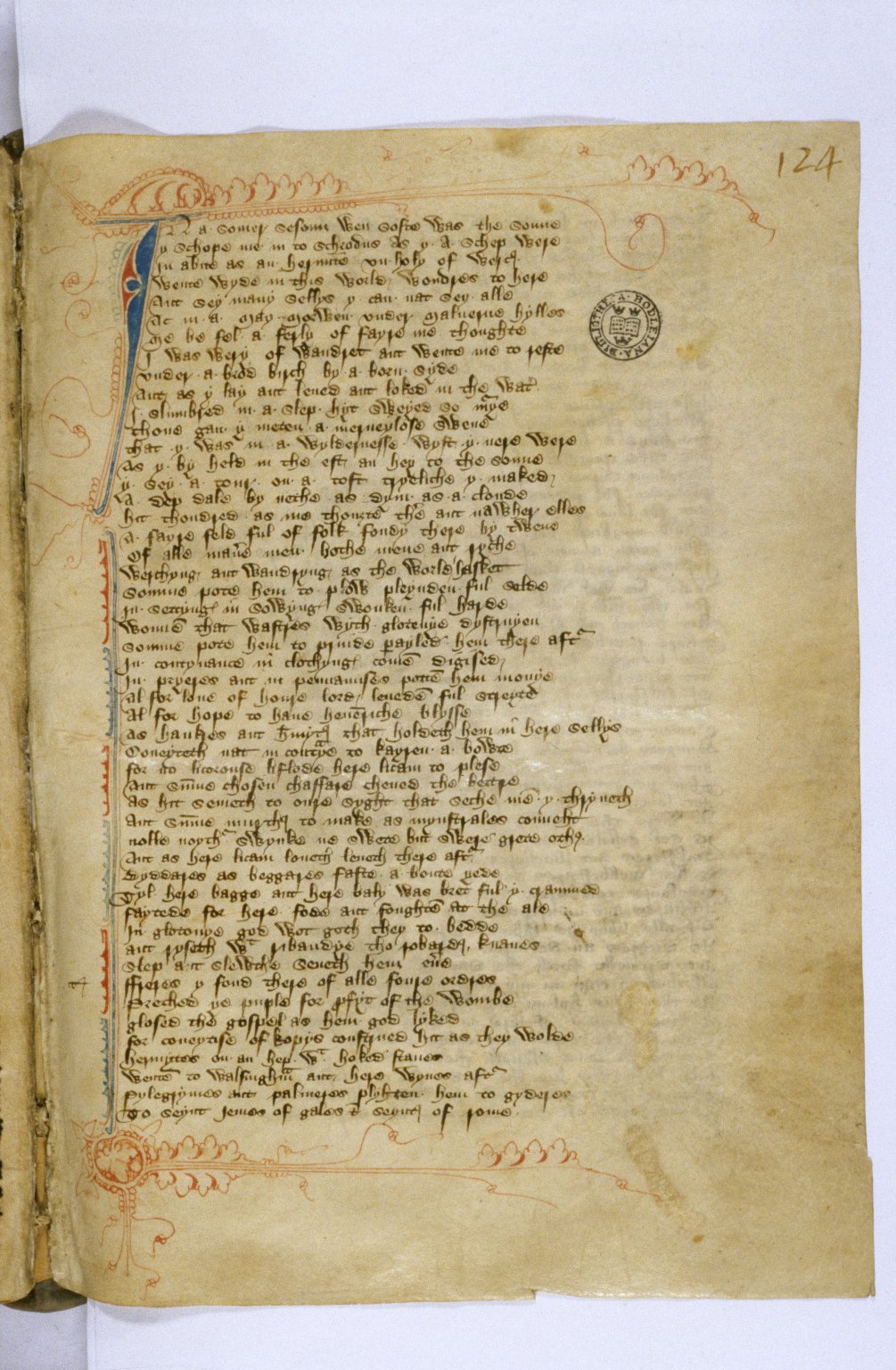Scholars have long investigated the French, Italian, and English influences on the work of Geoffrey Chaucer. However, they have largely neglected the impact of authors and texts from the Iberian Peninsula.
There are several routes by which Chaucer could have been exposed to Iberian sources. First of all, he may have come into direct contact with Spanish and Catalan texts during his time in the Iberian Peninsula. In 1366, Chaucer travelled to Castile, receiving a safe conduct from the king of Navarre en route, and he may have been in the Iberian Peninsula for over a year. Some scholars have even hypothesized that Chaucer was at the battle of Nájera on April 3, 1367, with his future companions Thomas Percy, William Beachamp, John Devereaux, and Guichard d’Angle.
Chaucer could also have encountered Spanish texts through his connection to John of Gaunt, the Duke of Lancaster and one of his principal patrons. In 1372, John of Gaunt married Constance, the oldest surviving child of Pedro I of Castile. This marriage allowed the duke to claim the throne of Castile in the name of his wife following her father’s overthrow and death. It also led to his palace at the Savoy becoming a type of Castilian court in exile. Given his relationship with John of Gaunt, as well as his wife’s position as one of Constance’s attendants from 1372-1387, it is likely that Chaucer would have come into contact with Castilian exiles while visiting the Savoy. Although John of Gaunt was ultimately unsuccessful in gaining a crown for himself, he did arrange for one of his daughters, Philippa, to become queen of Portugal, and another, Catherine, to become queen of Castile.
Chaucer’s interest in the Iberian Peninsula is clear throughout his work. Chaucer mentions “Spain,” or things Spanish in ten of the stories of the Canterbury Tales (Yeager 194-195). Chaucer also mentions Petrus Alfonsi in the Tale of Melibee, and he provides a detailed account of Pedro I’s death in the Monk’s Tale.
The mention of Alfonsi is particularly evocative because it suggests one possible area of Iberian influence. In the early twelfth century, Alfonsi wrote the Disciplina Clericalis, which was the first instance of a frametale – a popular literary structure in Arabic and Middle Eastern literature that embeds various discrete stories within a larger framing device – being composed in Latin (Wacks 25). Around a century and a half later, Alfonso X had the Arabic frametale Kalila wa-Dimna translated into the Castilian Calila e Digna. In the following decades, the frametale became a popular vernacular literary structure in the Iberian Peninsula. For instance, Ramon Llull, Don Juan Manuel, and Juan Ruiz all composed frametales in the early fourteenth century. This development in the Iberian Peninsula may have had an important, although indirect, influence on the composition of Chaucer’s own frametale, the Canterbury Tales.
Some scholars have also argued for a more direct influence. John Barker, for instance, argues that the many textual similarities between the Libro de Buen Amor and Chaucer’s Pardoner’s Tale could not have been accidental (609). Although he admits that both texts could have used the same source, Pope Innocent III’s De contemptu mundi sivi de miseria condicionis humane, Barker claims that the shared details in both texts – such as drunkenness, taverns, and gambling – suggests that the Libro de Buen Amor was the immediate source for the Pardoner’s Tale (610).
Another scholar, Thomas Garbáty, argues that Boccaccio’s Il Filostrato was not the only source for Chaucer’s Troilus and Criseyde (459). Instead, he posits that Chaucer was also influenced by the twelfth-century Pamphilus de Amore and the Libro de Buen Amor. In addition to being a re-telling of the story from the Pamphilus, Garbáty claims that Chaucer’s Criseyde bears a strong resemblance to Juan Ruiz’s Doña Endrina, that Pandarus matches the traditional stereotype of a Spanish “trotaconventos” (a Spanish term for a go-between), and that Boccaccio’s Troilio was far too bold to have been the inspiration for Chaucer’s Troilus (468-469).
Additionally, Eugenio Olivares Merino has shown that Chaucer may have based his account of Pedro I’s death in the Monk’s Tale on Pero López de Ayala’s history of the king (492). In particular, the second stanza includes a clear criticism of Bertrand du Guesclin, which is included by López de Ayala but not found in contemporary accounts of the event composed in French, Catalan, or Latin.
One final area where Iberian influence may be seen in Chaucer’s work is in his figure of the Pardoner. Among the reasons that the Pardoner is such a fascinating character is that he is a religious figure who is open and unrepentant about his own misdeeds. Although anticlerical literature was fairly common in the Middle Ages, it is difficult to think of another religious narrator who presents himself in such a negative way, except for one: Juan Ruiz’s pseudo-autobiographical narrator of the Libro de Buen Amor, the Archpriest of Hita.
Chaucer was not only influenced by French, Italian, and English texts, but also by works coming out of the unique political and cultural milieu of medieval Iberia. One of the most important Iberian contributions was the development and transmission of the frametale literary structure to Europe, first in Latin translations, and eventually in original vernacular compositions. In addition to this indirect influence, however, there are strong arguments suggesting that Chaucer was exposed to and directly influenced by specific Iberian authors and texts, although further study is needed.
Bretton Rodriguez, Ph.D.
Assistant Professor of Humanities
Boğaziçi University
WORKS CITED
Barker, John. “Influencia de la literatura española en la literatura inglesa.” Revista de cultura y vida universitaria 23.4 (1946): 593-610.
Garbáty, Thomas. “The Pamphilus Tradition in Ruiz and Chaucer.” Philological Quarterly 46 (1967): 457-470.
Olivares Merino, Eugenio. “Juan Ruiz’s Influence on Chaucer Revisited: A Survey.” Neophilogus 88 (2004): 145-161.
Wacks, David. Framing Iberia: Maqamat and Frametale Narratives in Medieval Spain. Brill: Leiden. 2007.
Yeager, R.F. “Chaucer Translates the Matter of Spain.” In England and Iberia in the Middle Ages, 12th-15th Century: Cultural, Literary, and Political Exchanges. Edited by María Bullón-Fernandez. Palgrave Macmillan: New York (2007): 189-215.





